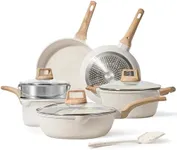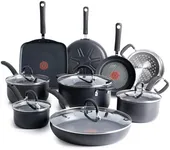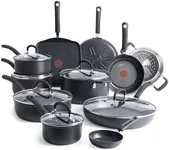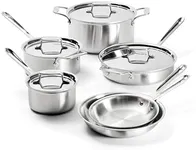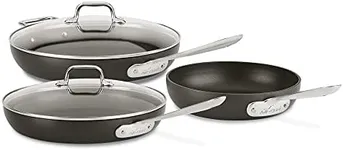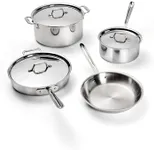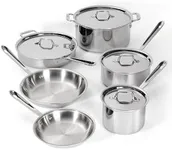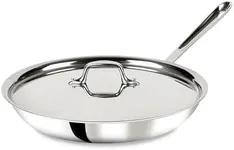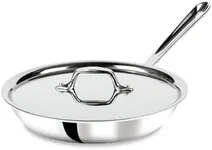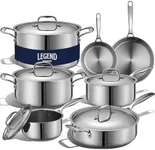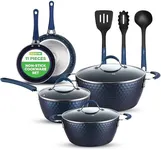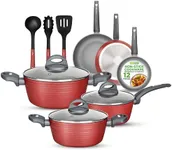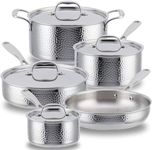Buying Guide for the Best Induction Cookware
Picking the right induction cookware is essential to make the most out of your induction cooktop. Unlike traditional cookware, induction-compatible pots and pans need special features to work with the magnetic heating process used by induction stoves. The right choice makes cooking efficient, saves energy, and helps you achieve better results in the kitchen. Before buying, consider what and how often you cook, and match the features to your lifestyle for the best experience.Magnetic Base CompatibilityThis refers to whether the cookware can actually work with induction cooktops, which heat through magnetism. Only pans and pots with ferromagnetic material at the base (like certain types of stainless steel or cast iron) will work. To check, use a magnet—if it sticks strongly to the base, the cookware is compatible. Choosing the right one means understanding that if you use non-compatible cookware, the induction surface won't heat the pan. So, always ensure your choice passes the magnet test, especially if you use induction as your primary cooking method.
Base ThicknessThe thickness of the cookware’s base affects how evenly it heats and how well it retains heat. Thicker bases typically provide better heat distribution and retain heat better, which helps avoid hot spots and makes cooking more consistent, especially important for tasks like simmering or frying. Thin bases heat up and cool down faster but may heat unevenly and warp over time. If you cook demanding recipes or want better heat control, opt for cookware with a thicker base; if you prefer light, fast-heating pans for boiling or simple tasks, thinner bases may suffice.
MaterialInduction cookware can be made from various materials such as stainless steel, cast iron, or enameled steel. Stainless steel is durable, rust-resistant, and typically lightweight, but the quality depends on the steel’s grade. Cast iron holds heat well and offers excellent searing, though it is heavy and requires more care. Enameled versions are easier to clean. Your style of cooking and how much maintenance you’re willing to do should steer your choice. For most uses, stainless steel offers an excellent balance; go for cast iron if you like slow-cooking or searing.
Non-Stick CoatingMany induction-compatible pots and pans also come with non-stick coatings, which make cooking and cleaning easier. The quality and type of non-stick surface matter for durability and food safety. Some prefer ceramic-based non-stick for a more natural option, while others like traditional non-stick for its slipperiness. If you often cook sticky foods like eggs or pancakes, a non-stick surface can be a big advantage. Consider how often you want to replace your cookware, since non-stick surfaces can wear out with time.
Pan Size and ShapeThe size and shape of the cookware should match both your cooktop’s induction zones and your cooking habits. If a pan is too small or too large for the induction ring, it may not heat efficiently. Standard pan sizes range from small saucepans to large stock pots and wide skillets. Think about the foods you cook most often—choose larger, deeper pans for soups and stews, or smaller, shallower pans for eggs and sauces. It’s also wise to ensure the bottom of the pan is flat, as flatness ensures better contact and efficient heating.
Oven-Safe CapabilitySome induction cookware can move from stovetop to oven, which is useful for recipes that start with browning and finish in the oven. Cookware will have a maximum oven-safe temperature depending on its construction and handle material. If you often use your oven to finish dishes, look for pans clearly marked as oven-safe, and check the temperature limit printed by the manufacturer.
Handle Design and ComfortHandles matter for comfort, safety, and how well you can maneuver the cookware. Some handles stay cool on the stove, while others heat up. Also, try to choose ergonomic designs that are easy to grip and securely attached. If you have limited hand strength or often carry heavy pots, a comfortable handle can make all the difference during cooking.
